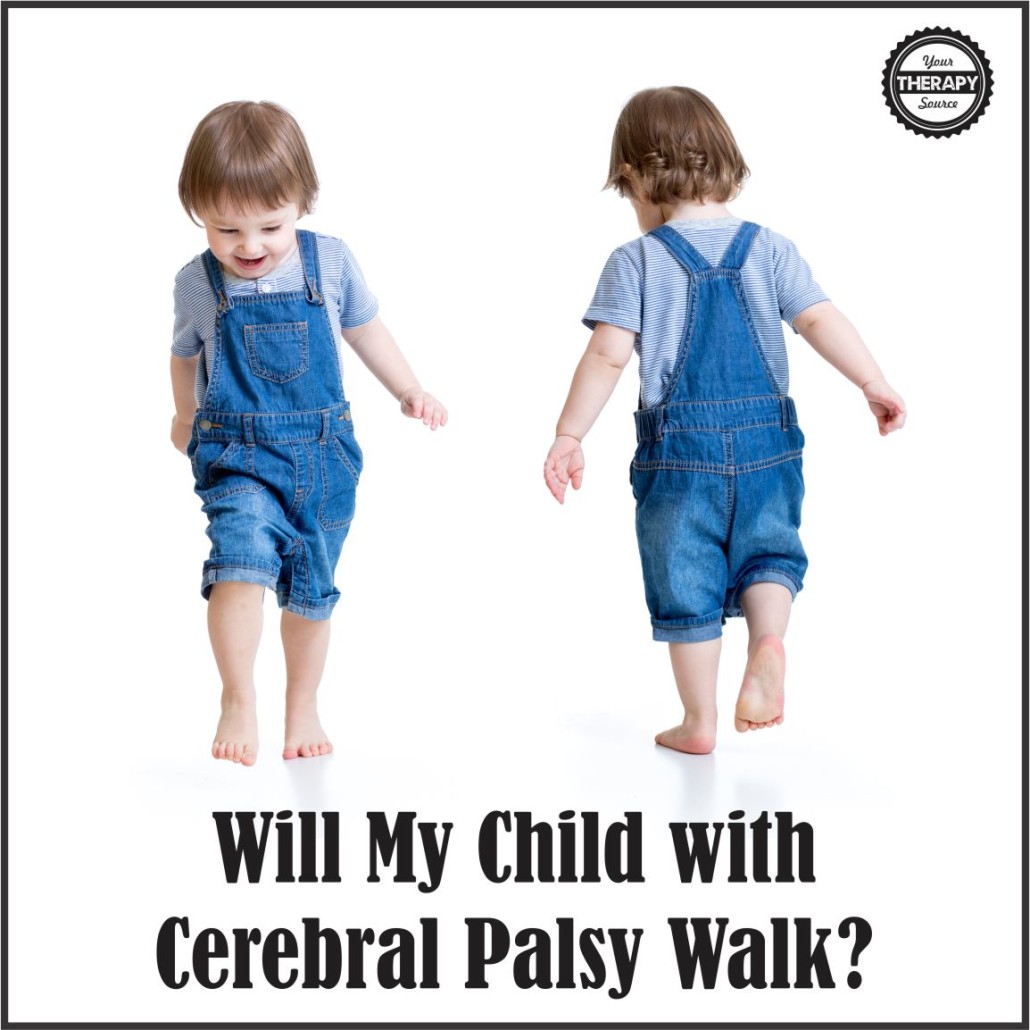Will My Child with Cerebral Palsy Walk?
 If you are a pediatric physical therapist who works with young children you have most likely been asked by parents “will my child with cerebral palsy walk?” Many times the response is based on evaluation results, clinical experience and research.
If you are a pediatric physical therapist who works with young children you have most likely been asked by parents “will my child with cerebral palsy walk?” Many times the response is based on evaluation results, clinical experience and research.
Disability and Rehabilitation published the results of a systemic review on 1123 identified articles on prognostic predictors for ambulation in children with cerebral palsy. Twelve articles met the inclusion criteria for qualitative synthesis and eight were appropriate for meta-analysis. Potential predictors for ambulation were the type of cerebral palsy, early motor milestones, primitive reflexes and postural reactions, absence of visual impairment, absence of intellectual disability, absence of epilepsy or seizure, and the ability to feed self.
Meta-analysis revealed four significant prognostic predictors for ambulation:
- sitting independently at 2 years.
- absence of visual impairment.
- absence of intellectual disability.
- absence of epilepsy or seizure.
Here is some additional research from Physical Therapy on 80 children with cerebral palsy (GMFCS levels II and III) ages 2-6 years. Postural control, reciprocal lower limb movement, functional strength, motivation and family support were all measured 7 months to one year prior to attainment of walking.
The results indicated the following:
- a measure of functional strength and dynamic postural control in a sit-to-stand activity was the only significant predictor of taking ≥3 steps independently.
- the positive likelihood ratio for predicting a “walker” was 3.26, and the negative likelihood ratio was 0.74.
- the model correctly identified a walker or “nonwalker” 75% of the time.
The researchers concluded that the ability to transfer from sitting to standing and from standing to sitting predicted independent walking in young children with CP. Additional studies were recommended to establish indicators of when children with CP are ready for independent walking.
References:
Denise M. Begnoche, Lisa A. Chiarello, Robert J. Palisano, Edward J. Gracely, Sarah Westcott McCoy, and Margo N. Orlin. Predictors of Independent Walking in Young Children With Cerebral Palsy. PHYS THER February 2016 96:183-192; published ahead of print June 18, 2015, doi:10.2522/ptj.20140315
Orawan Keeratisiroj, Nuanlaor Thawinchai, Wantana Siritaratiwat, Montana Buntragulpoontawee, and Chayanin Pratoomsoot. Prognostic predictors for ambulation in children with cerebral palsy: a systematic review and meta-analysis of observational studies. Disability And Rehabilitation. Published online: 16 Nov 2016 at http://dx.doi.org/10.1080/09638288.2016.1250119
Teaching Motor Skills to Children with Cerebral Palsy and Similar Movement
Disorders – A Guide for Parents and Professionals By: Sieglinde Martin M.S., P.T.
FIND OUT MORE AT https://www.yourtherapysource.com/CPmotorskills.html



